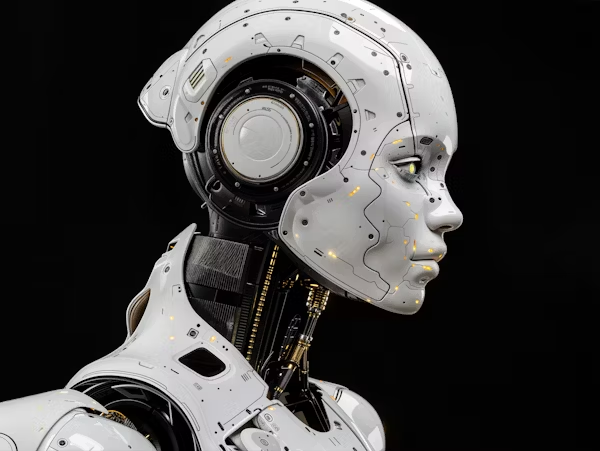1. Introduction
Artificial Intelligence (AI) isn’t just a tech buzzword anymore — it’s the silent engine driving modern innovation. From our smartphones to healthcare systems, AI has woven itself into nearly every part of our lives.
So, what is AI? In simple terms, it’s a branch of computer science that enables machines to perform tasks that usually require human intelligence. Think decision-making, language translation, problem-solving, and even creativity.
But why does AI matter now more than ever? Because we live in a data-driven world. AI can process vast amounts of information at lightning speed and learn from it, helping businesses, governments, and individuals make smarter decisions.
2. History of AI
The Early Days
The journey of AI began in the 1950s with dreamers like Alan Turing and John McCarthy, who envisioned machines that could “think.” Turing’s famous question — “Can machines think?” — sparked the initial wave of AI research.
The AI Winter and Revival
By the 1970s and 80s, hype outpaced progress, and funding dried up — a period known as the AI Winter. But things changed in the 2000s, thanks to better algorithms, big data, and stronger computing power. Suddenly, AI was back and more powerful than ever.
3. What Makes AI ‘Intelligent’?
Machine Learning Basics
AI learns through machine learning (ML) — a method where algorithms improve through experience. Instead of programming every step, we train the machine using data.
Neural Networks and Deep Learning
Inspired by the human brain, neural networks mimic how neurons connect and fire. When these networks get deep enough, we call it deep learning, which powers things like voice recognition and image classification.
4. Types of AI
Narrow AI vs General AI
Most AI today is Narrow AI — it’s good at specific tasks (like Netflix recommending shows). General AI is the holy grail — a system that can do anything a human can. We’re not there yet, but we’re inching closer.
Reactive vs Self-Aware AI
Reactive machines like IBM’s Deep Blue can respond to specific inputs but don’t store memories. More advanced AIs are self-aware, able to understand emotions and even develop consciousness — though that’s still science fiction… for now.
5. AI in Everyday Life
Smartphones & Smart Assistants
Ever said, “Hey Siri” or “OK Google”? That’s AI at work, recognizing your voice, understanding your words, and delivering answers in seconds.
Personalized Recommendations
From your YouTube playlist to Amazon product suggestions, AI quietly tracks your preferences and tailors your experience. It’s like having a personal assistant who knows your taste inside out.
6. AI in Business
Automating Workflows
Why spend hours on repetitive tasks? AI automates emails, schedules meetings, and processes invoices, freeing up human workers for more creative jobs.
Enhancing Customer Experience
Chatbots powered by AI can handle customer inquiries 24/7, resolve issues quickly, and even upsell products. Companies like Zendesk and Salesforce are leading this space.
7. AI in Healthcare
Early Diagnosis and Predictive Care
AI can analyze medical scans with incredible accuracy, spotting issues like tumors earlier than a human doctor might. Systems like IBM Watson Health are changing the diagnostic game.
Robotics and Virtual Assistants
Robotic surgeries guided by AI are becoming safer and more precise. Virtual nurses, like Sensely’s Molly, can answer health questions and monitor patient vitals from home.
8. AI in Transportation
Self-Driving Vehicles
Companies like Tesla and Waymo are using AI to build autonomous vehicles that can navigate traffic, detect obstacles, and even predict pedestrian behavior.
Traffic and Route Optimization
Google Maps uses real-time AI analysis to suggest the fastest routes. It’s like having a digital traffic cop guiding you through the city.
9. AI in Education
Intelligent Tutoring Systems
Platforms like Khan Academy and Duolingo use AI to adapt lessons based on how quickly or slowly a student learns.
Personalized Learning Paths
AI can analyze a student’s strengths and weaknesses and customize the curriculum accordingly. This puts learners in the driver’s seat, improving engagement and retention.
10. AI in Cybersecurity
Threat Detection
AI can identify anomalies in network traffic and spot threats before they strike. It’s like having a digital watchdog on high alert 24/7.
Behavior Analysis
By learning normal behavior patterns, AI can detect and stop abnormal or malicious activity faster than traditional systems.
11. AI and Robotics
Collaborative Robots (Cobots)
These are robots that work side-by-side with humans, especially in manufacturing. They handle repetitive tasks, allowing people to focus on supervision and quality control.
AI-Powered Drones
From delivering packages to surveying disaster zones, AI-driven drones are turning science fiction into real-life solutions.
12. The Ethics of AI
Bias in Algorithms
AI learns from data — and if the data is biased, the AI will be too. This can lead to unfair treatment in areas like hiring, lending, or law enforcement.
Job Displacement Concerns
As automation takes over routine tasks, there’s a real fear of job losses. But many experts believe AI will create new jobs, especially in oversight, ethics, and maintenance.
13. AI in Entertainment
Game Development
AI can create dynamic, reactive game environments where non-player characters (NPCs) evolve and learn based on how you play.
Movie Recommendations & CGI
From Netflix’s smart algorithms to mind-blowing CGI in films like Avengers: Endgame, AI is making entertainment more immersive and personalized.
14. Future of AI
AI in Quantum Computing
Quantum computing could supercharge AI by performing complex calculations at unimaginable speeds. Companies like IBM and Google are already exploring this frontier.
AGI: Are We Close?
Artificial General Intelligence (AGI) — the kind of AI that can think like a human — is still theoretical. But with rapid progress, some believe we could see early versions within a few decades.
15. Conclusion and Takeaways
Artificial Intelligence is no longer a future concept — it’s our present reality. It’s reshaping how we live, work, and interact with the world. Whether it’s helping doctors diagnose faster, guiding your car through traffic, or recommending your next binge-watch, AI is deeply embedded in modern tech.
Yes, there are risks — like bias, privacy, and job displacement — but the potential benefits are enormous. With responsible development and ethical considerations, AI can be one of the most powerful tools humankind has ever created.
❓ FAQs
1. What is the difference between AI and Machine Learning?
AI is the broader concept of machines performing human-like tasks, while machine learning is a subset of AI that focuses on learning from data.
2. Is AI taking over jobs?
AI is automating some jobs but also creating new ones in tech, maintenance, and AI ethics.
3. Can AI be dangerous?
If not developed responsibly, AI can lead to biased decisions or privacy issues. That’s why ethical AI development is crucial.
4. How do companies use AI today?
From customer service chatbots to data analysis and fraud detection, businesses use AI to improve efficiency and user experience.
5. Will AI ever surpass human intelligence?
That’s the goal of AGI, but it’s still far from reality. Most current AI systems are specialized and limited to specific tasks.

